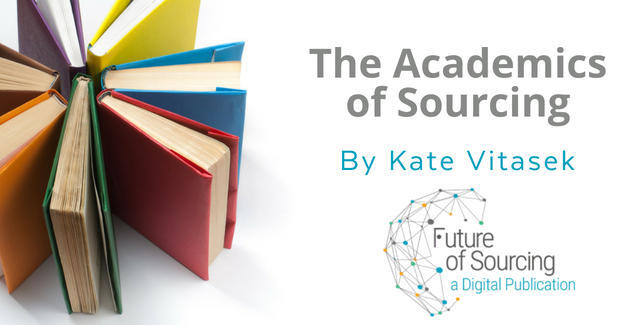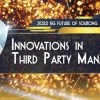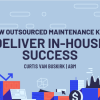Kathleen Eisenhardt is a long-time professor at Stanford University, best known for her influential and highly cited research in an area known as “agency theory.”
In a 1989 paper "Agency Theory: An Assessment and Review," published in the Academy of Management Review, Eisenhardt described agency theory as “the optimal contract form for the control relationship in which one person, the principal, delegates work to another, the agent.” Eisenhardt concluded that agency theory offers a flexible approach to “control variables” by linking reward structures, “task characteristics, information systems and business uncertainty” to behavior and outcome-based strategy.
Her work is so influential that myself, my reasearch team and co-authors on the book Strategic Sourcing in the New Economy embedded the concepts into our work on Sourcing Business Model theory. Her attributes for deciding on when to use an outcome-based business model are a key part of the Business Model Mapping tool kit that is taught as part of SIG University’s Certified Sourcing Professional program.
As a fan of outcome-based contracting, her advice is that principals and agents (a buyer and seller) need to be on the same page when it comes to risk and risk sharing, pricing, incentives and communication. This is where the Five Rules of Vested – the foundation of the Vested business model – converges with the ideas of Eisenhardt on agency theory and provides a pathway to successful strategic interaction. (For more on the Five Rules, read Vested Outsourcing: Five Rules That Will Transform Outsourcing.)
While I like Eisenhardt’s work on agency theory, I am even more excited about her latest research on applying “simple rules” for working in today’s dynamic and complex world. She recently expanded on her influential 2012 Harvard Business Review article “Simple Rules for a Complex World” in a book (with co-author Donald Sull) titled Simple Rules: How to Thrive in a Complex World.
So, what is Eisenhardt’s advice and why should you care?
First, let’s look at her research, which led to a surprising discovery as she and Sull studied why some high-tech companies thrived during the internet boom. The finding? Companies like Intel and Cisco relied not on complicated frameworks – but on simple rules of thumb – even though they were in extraordinarily complex, challenging and fast-moving industries.
Managers in these companies identified and focused on a critical process, such as acquisitions or capital allocation, in which a bottleneck impeded growth. Then they developed a few guidelines to manage that particular process. She explains why simple rules of thumb work so well: “This approach (using simple rules of thumb) helped companies to bridge the gap between strategy and execution – to make on-the-spot decisions and adapt to rapidly changing circumstances, while keeping the big picture in mind.”
Makes sense, but how do you do it? Eisenhardt offers up the following five rules as advice for developing “simple rules:”
- Identify a bottleneck that is both specific and strategic – the bottleneck should be relatively narrow, a well-defined process or process step, not a broad aspiration.
- Let data trump opinion – don’t come up with wild, “shoot from the hip” rules; base them on a thoughtful analysis of historical experience.
- Users make the rules – don’t hand down rules from above, let those involved in implementing the rules develop them.
- The rules should be concrete – rules should not be difficult to understand; think yes-or-no criteria.
- The rules should evolve – simple rules should change as the company and the market change, and as managers better understand what is actually happening on the ground.
Once again, Eisenhardt’s advice for creating “simple rules” aligns nicely with my research into highly complex and dynamic buyer-supplier relationships. The entire Vested model is based on five simple “rules” for architecting a deal structure between a buyer and supplier. In addition, the concept that how you work should evolve is a hallmark of the Vested governance model; it’s a collaborative and flexible approach for how buyers and suppliers solve problems together fairly when “business happens.”
Eisenhardt's current research centers on collaboration and competition in the computing, telecommunications and semiconductor industries from the perspectives of complexity, evolutionary and game theories. One of her ideas is that that too much structure can create gridlock, while too little structure creates chaos.
So, when dealing with risk, incentives, sudden events, uncertain markets and volatile economic conditions – “structured chaos” in her words – it’s good to have some flexible and simple rules as a guide to fall back on.







